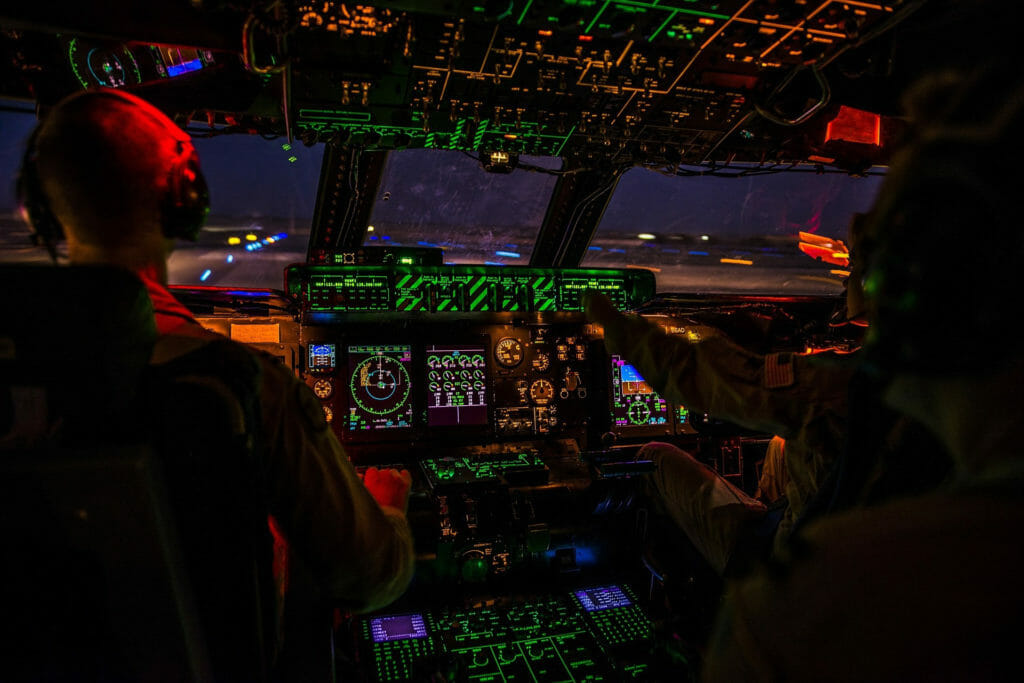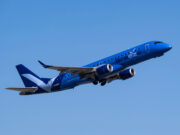 Initially, this month’s article was planned to address T.E.M. or Threat and Error Management, but due to a special request, the topic is Automatic Dependent Surveillance-Broadcast (ADS-B). This is the technology that the FAA is deploying to aid in the transition to Next Gen air traffic control, as well as having widespread positive effects on safety and operating efficiency. Installation of the ADS-B technology is mandated by the FAA, effective January 1, 2020. Levels of awareness of what ADS-B is varies widely among pilots and aviation enthusiasts, though it has been in use since the turn of this century.
Initially, this month’s article was planned to address T.E.M. or Threat and Error Management, but due to a special request, the topic is Automatic Dependent Surveillance-Broadcast (ADS-B). This is the technology that the FAA is deploying to aid in the transition to Next Gen air traffic control, as well as having widespread positive effects on safety and operating efficiency. Installation of the ADS-B technology is mandated by the FAA, effective January 1, 2020. Levels of awareness of what ADS-B is varies widely among pilots and aviation enthusiasts, though it has been in use since the turn of this century.
ADS-B is essentially a data network that allows an aircraft’s position to be transmitted to other aircraft within the network and ground-based air traffic control facilities to aid with situational awareness, collision avoidance, and ultimately, as part of the FAA’s Next Gen initiative for aircraft sequencing and spacing.
The ADS-B system is fairly straightforward in design. Fundamentally, each equipped aircraft has a GPS-based transmitter that sends a signal to the network. The network is based on other ADS-B or TCAS (traffic collision avoidance system) -equipped airplanes, which allows direct aircraft-to-aircraft position transmissions as well as transmissions to a series of ground-based receivers and transmitters, that relay the aircraft positions to other facilities, including ATC. These ground-based stations are also able to transmit aircraft position to other aircraft that may not be able to receive a direct transmission from another aircraft (e.g. should there be a mountain between them).
There are two basic types of ADS-B systems; ‘ADS-B Out’ and ‘ADS-B In.’ It is the ADS-B Out system that is covered by the FAA mandate. This “out” functionality is essentially a transmitter that broadcasts the aircraft’s position to the ADS-B network so that other ADS-B equipped aircraft and facilities receive the GPS position of the aircraft. This will support the fundamental need for the FAA to be able to see the airplane at ATC facilities, just as they currently do with the Mode C transponders which allow radar facilities to identify the individual aircraft. The advantage of ADS-B Out is that it will greatly enhance the ability of other aircraft to also “see” this signal, greatly aiding with collision avoidance. Per the FAA regulation, ADS-B Out capability will be required in any airspace where a Mode C transponder is currently required, but would not allow for the removal of the Mode C transponder. As the technology is deployed and matures, it is possible that the use of ADS-B Out could eventually replace the traditional radar scope, although radar will probably remain as the secondary system.
 ADS-B In affords even more usability because it provides the equipped airplane with a display that shows the location of any aircraft that is transmitting directly to the airplane, or is being relayed through one of the ground stations. The usefulness and safety impact of this feature can’t be overstated, because while it does not remove the need for visual scanning for collision avoidance, it certainly enhances situational awareness of traffic in the area. In my personal experience with ADS-B over several thousand hours of flying in some of the busiest airspace in the nation, I have recognized the avoidance of countless traffic conflicts and consequently near misses and potential mid-air collisions. I’ve also seen occasions for verification of ATC instructions and clarification when there may have been a misjudgment or mistake in their instructions, such as being vectored too close to another aircraft. In some cases, it even allowed tracking of a target that wasn’t in contact with ATC, where ATC could not provide any information within uncontrolled airspace.
ADS-B In affords even more usability because it provides the equipped airplane with a display that shows the location of any aircraft that is transmitting directly to the airplane, or is being relayed through one of the ground stations. The usefulness and safety impact of this feature can’t be overstated, because while it does not remove the need for visual scanning for collision avoidance, it certainly enhances situational awareness of traffic in the area. In my personal experience with ADS-B over several thousand hours of flying in some of the busiest airspace in the nation, I have recognized the avoidance of countless traffic conflicts and consequently near misses and potential mid-air collisions. I’ve also seen occasions for verification of ATC instructions and clarification when there may have been a misjudgment or mistake in their instructions, such as being vectored too close to another aircraft. In some cases, it even allowed tracking of a target that wasn’t in contact with ATC, where ATC could not provide any information within uncontrolled airspace.
It should be noted that the traffic function of ADS-B works in conjunction with existing TCAS technology, though ADS-B is not capable of traffic resolution advisories. However, it is apparent that the technology will still be extremely valuable to transport category aircraft going into smaller airports with less ATC oversight, since great speed differentials and relative lack of visibility make visual tracking and scanning more difficult. Adding ADS-B transmissions to the ground network and radar systems gives the collective technologies an even greater potential to reduce the probability of accidents like the San Diego Pacific Southwest Airlines 727 mid-air accident, the Cerritos California DC-9 midair, and perhaps it could have prevented the runway accident at LAX between US Air and SkyWest.
If two aircraft are equipped with ADS-B In and are operating near one another on a collision course, then the appropriate target will change color to alert to the possibility of a collision hazard. While no resolution advisories are provided, it can greatly aid in identifying a potential threat long before visual sighting can be realized.
Another potential advantage with ADS-B is the simultaneous broadcast of FIS-B (Flight Information Services-Broadcast) which allows data uplink from weather-center radar feeds to provide current weather reports such as METARS, TAFS, etc. Beyond the collision avoidance and traffic awareness, this obviously adds an entirely different dimension to the capabilities of the pilot and crew in obtaining the latest and most current weather information enroute, which can greatly aid in the decision-making process.
 Of course, one of the big pushes against ADS-B is the additional cost for operators to install the equipment in their aircraft. But, the enhanced level of safety it adds to aviation operations deem the costs necessary and part of the price of running a safe and efficient transportation system. It should be regarded no differently than the costs associated with installation, training, and maintenance of today’s required technologies, such as Mode C transponders. In short, the benefits greatly outweigh any associated costs, even for the relatively casual user.
Of course, one of the big pushes against ADS-B is the additional cost for operators to install the equipment in their aircraft. But, the enhanced level of safety it adds to aviation operations deem the costs necessary and part of the price of running a safe and efficient transportation system. It should be regarded no differently than the costs associated with installation, training, and maintenance of today’s required technologies, such as Mode C transponders. In short, the benefits greatly outweigh any associated costs, even for the relatively casual user.
The longer-term goal for ADS-B is to allow the broadcast of GPS positions to ATC which will provide for better routing and spacing beyond the current limitations of radar facilities. This technology could reduce or eliminate the onerous “one in, one out” requirements for IFR traffic at current non-radar airports. It could also have a dramatic effect upon even the biggest airports’ arrival and departure rates as the position updates would be nearly instantaneous compared to the current refresh rates of ATC radar, which can extend to about 12 seconds for an enroute facility. Of course, optimized spacing, sequencing and positioning could have profound effects on the economics of aviation. More efficient systems result in time, fuel and greater economic savings.
ADS-B has the potential to transform collision avoidance, aircraft spacing and the availability of information while in flight as few technologies in aviation have previously had. The system simultaneously improves safety through enhanced situational awareness and more informed aeronautical decision making, plus it adds convenience and improves the economics in the operating environment. Few technologies have offered such a promising impact. Having used ADS-B extensively, I welcome the change.




















































